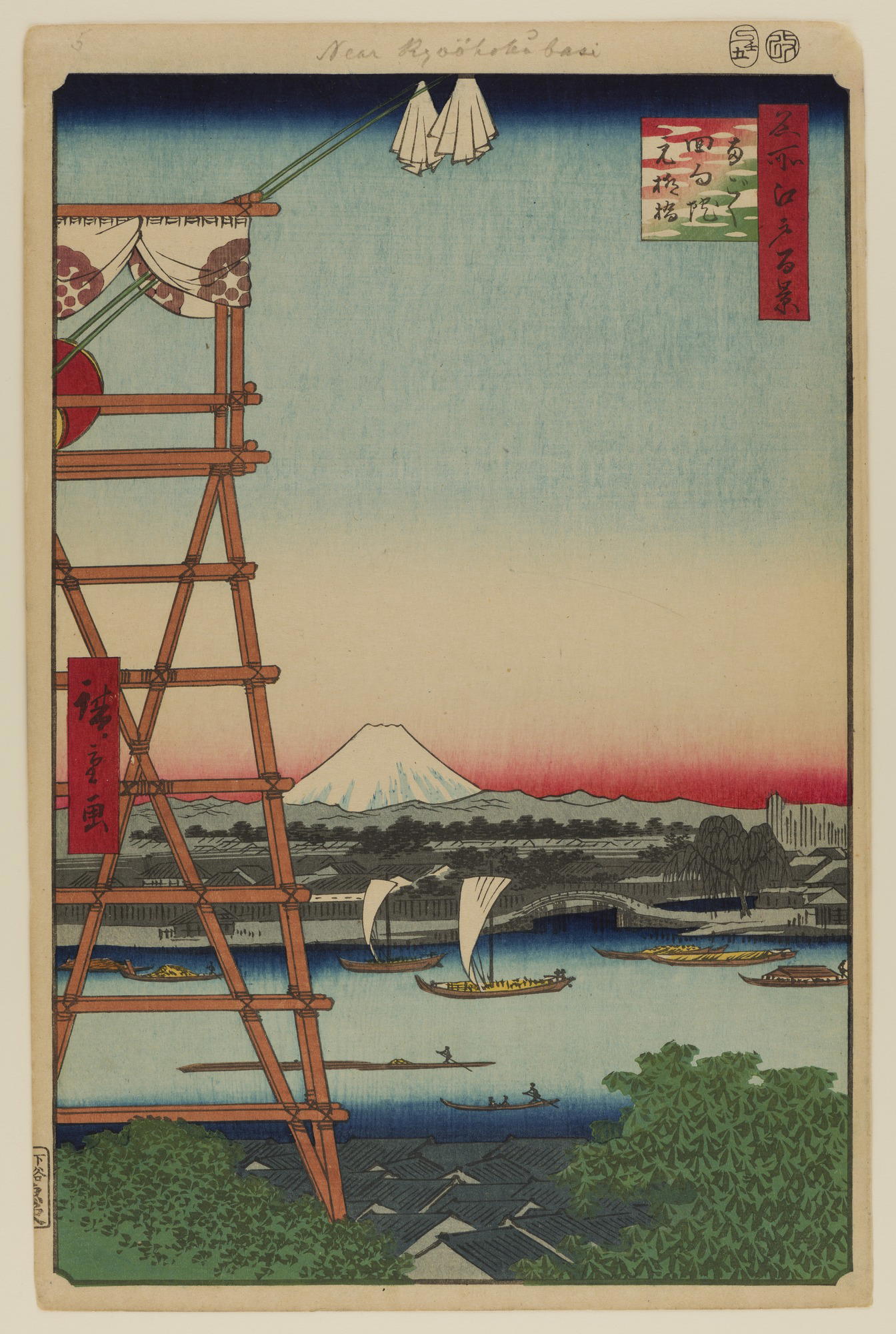Ryogoku Ekoin and Moto-Yanagibashi Bridge, No. 5 in One Hundred Famous Views of Edo

Brooklyn Museum photograph
Object Label
Hiroshige has used an oblique vantage point to Mount Fuji to create a sense of excitement in an otherwise placid scene. The giant drum-tower at the left is the focus of the biannual sumo tournament on the grounds of the Buddhist temple of Ekōin. The two white cloths suspended from the tower indicate that the weather this spring day is suitable for a sumo match. Devoted fans will have already assembled in the temple precincts below. All of these fans were men; women attended only occasional practice sessions.
Caption
Utagawa Hiroshige (Japanese, 1797–1858). Ryogoku Ekoin and Moto-Yanagibashi Bridge, No. 5 in One Hundred Famous Views of Edo, 5th month of 1857. Woodblock print, Image: 13 3/8 x 8 3/4 in. (34 x 22.2 cm) Sheet: 14 1/4 x 9 1/4 in. (36.2 x 23.5 cm). Brooklyn Museum, Gift of Anna Ferris, 30.1478.5. (Photo: Brooklyn Museum)
Gallery
Not on view
Collection
Gallery
Not on view
Collection
Artist
Title
Ryogoku Ekoin and Moto-Yanagibashi Bridge, No. 5 in One Hundred Famous Views of Edo
Date
5th month of 1857
Period
Edo Period, Ansei Era
Geography
Place made: Japan
Medium
Woodblock print
Classification
Dimensions
Image: 13 3/8 x 8 3/4 in. (34 x 22.2 cm) Sheet: 14 1/4 x 9 1/4 in. (36.2 x 23.5 cm)
Signatures
Hiroshige-ga
Markings
Publisher's seal in lower left (Shitaya Uo Ei), "Brooklyn Museum, Brooklyn N.Y." stamped in lower left
Credit Line
Gift of Anna Ferris
Accession Number
30.1478.5
Have information?
Have information about an artwork? Contact us at